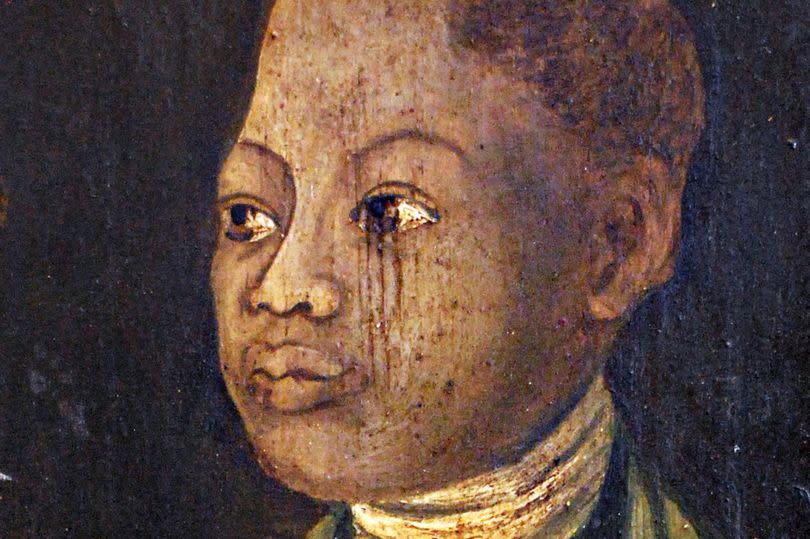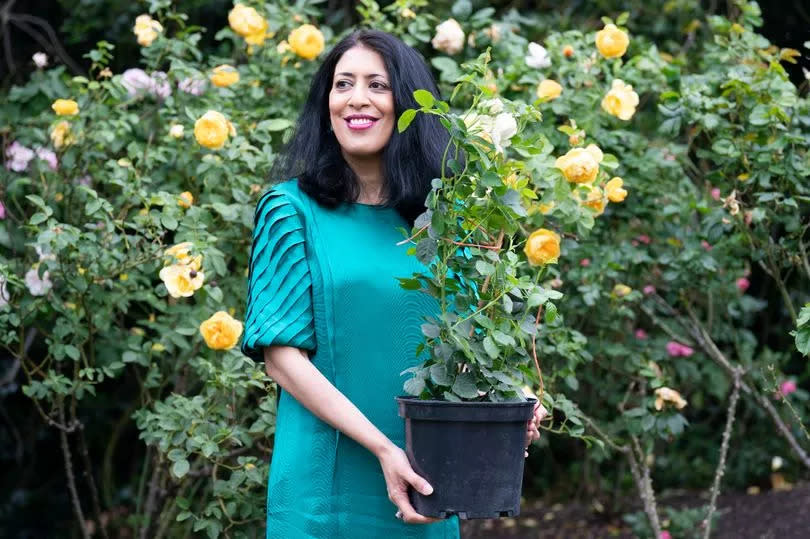Lewis Hamilton's Met Gala look inspired by 18th-century North Wales gardener

Lewis Hamilton is well known for his impeccable sense of fashion – and the Formula 1 ace has now revealed the surprising inspiration for his latest look. It draws upon the experiences of a man who became the first black person in North Wales whose life was well-documented.
John Ystumllyn was abducted as a child in the 18th Century and raised in Criccieth, Gwynedd. A victim of the slave trade, he originated either from West Africa or the West Indies, and became a skilled gardener whose good looks made him popular with local girls.
“Through adversity, he really triumphed,” said Hamilton. “So that’s where the inspiration really came from.” The F1 star was appearing at this year’s Met Gala in New York, one of fashion’s biggest nights.
READ MORE: Llandudno café where customers can enjoy delicious food while helping others
Hamilton pointed to the thorns on his gold necklace as representing the pain caused by the slavery trade. When he was snatched from his home John Ystumllyn could later recall the “frightful howls” of his mother as he was taken away. However, during his life in North Wales, he was well-liked and was said to have met with little racial prejudice.
The Met Gala is an annual fundraiser for the Metropolitan Museum of Art organised by Vogue editor-in-chief Anna Wintour. Each one has a different theme and this year’s subject was “The Garden of Time”.
Hamilton was making his fifth appearance at the event and, on the red carpet, Hamilton told Vogue that he always likes to do a “really deep dive” into the theme. He said: “I did a lot of research and I came across this 18th Century gardener who, through slavery times, came across from Africa to Wales and became the first black gardener in Wales.”
John Ystumllyn was about eight-years-old when he was snatched from his home. He was named after the Ystumllyn estate, Criccieth, to where he was taken by the Wynn family. Taught English and Welsh, he also became a skilled horticulturalist and florist in the estate garden, growing into a “handsome and vigorous young man” much admired by local girls. North Wales Live has a WhatsApp community group where you can get the latest stories delivered straight to your phone

He began courting Margaret Gruffydd, an unmarried maid from Hendre Mur, Trawsfynydd. When she moved from Ystumllyn to work in Dolgellau, John ran away from the estate and married Margaret in Dolgellau on April 9, 1768.
They had seven children, five surviving to adulthood, several descendants of whom still live in the area. The couple lived in Ynysgain Fawr, west of Criccieth, and John later worked at Maesyneuadd, another estate owned by the Wynn family near Talsarnau.
He was seen as a principled man who was respected by everyone, regardless of class, for his honesty and integrity. Towards the end of his life, Ystumllyn owner Ellis Wynn gave John a small thatched cottage with a big garden in “recognition for his service”.
He died of jaundice, possibly aged 46, and was buried in St Cynhaearn’s Church at Pentrefelin, near Criccieth on July 2, 1786. Sign up for the North Wales Live newsletter sent twice daily to your inbox

Although a number black people have been recorded as living in Wales before John, mainly as servants and musicians, his life was the best documented. Also known as Jac Du (Jack Black), his portrait was painted in 1754: other than a horn player at Erddig, Wrexham, this was a rare occurrence. After his death, a memorial to John was erected in the churchyard where he was buried.
In 2018, celebrating Black History Month in the UK, John Ystumllyn was included in a list of “100 Brilliant, Black and Welsh people”. He was subsequently described as the “Father of Black presence in North West Wales”.
In October 2021, a new yellow rose variety was cultivated in his memory – the first to be named in the UK after an ethnic minority individual. Twenty were planted around Criccieth Library near where John lived.
Find out what's going on near you

 Yahoo News
Yahoo News 
